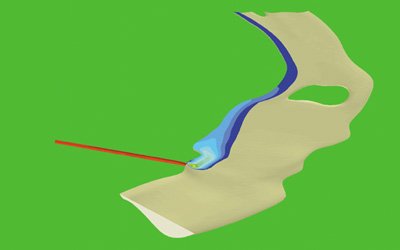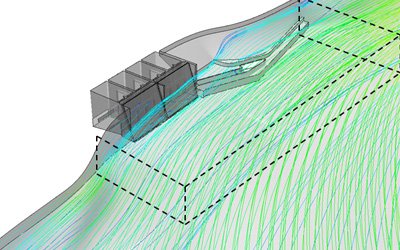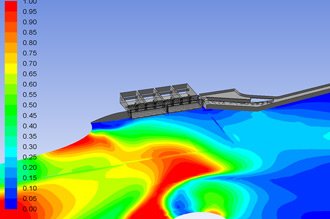Overview
CFD modelling can provide a method of analysing complex river reaches. Two dimensional mathematical models are commonly used to investigate river and flood plain systems. A three dimensional dynamic CFD model, when used in conjunction with a two dimensional model, allows a comprehensive understanding in complex areas, such as: bends, outfalls, intakes, weirs, bridges, etc.
Estuaries

Temporal models with tidal inputs simulate systems, where fresh and sea water may be mixing or stratifying.
Inflow tracking with species models will provide concentration gradients and dispersion characteristics of particles, including pollutants, sediments, etc.
Fish migration facilities

Migrating fish species rely on subtle changes in downstream current to find and make their way through hydraulic structures, such as weirs, dams and by-passes. CFD models can readily assess the design of hydraulic structures to ensure a satisfactory environment for fish migration is maintained.
Scour

CFD modelling can provide an assessment of scour potential from the derivation of velocity and shear stress contours at or adjacent to a river boundary and associated structures. This will allow suitable designs/remedial measures to be determined.







